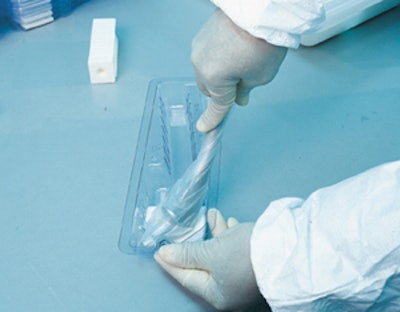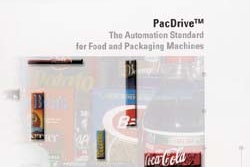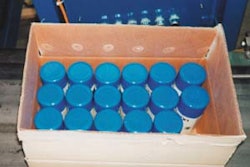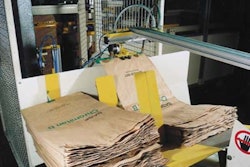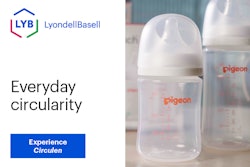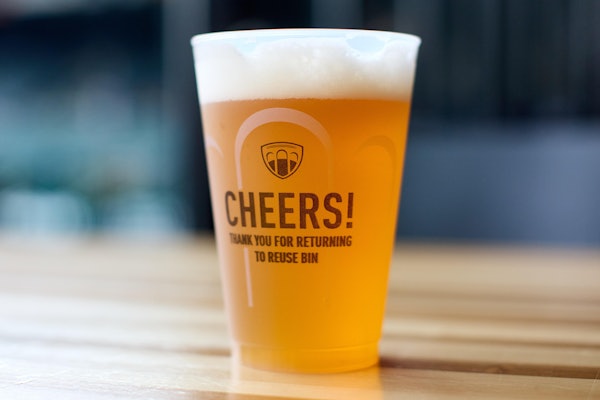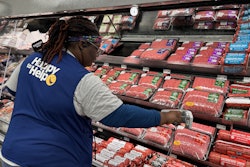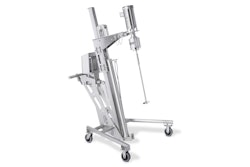Like the people that need them, hip stems used for hip replacement surgery come in all sizes. And therein lay the rub for the Orthopaedic Division of Smith & Nephew, Inc., when it came to packaging.
The Memphis, TN-based company had a growing number of trays tailored to the hip stems it makes under the Spectron®, Synergy, Conquest FX™ and Echelon™ brand names. As the number of new items and packaging grew, so did tray inventory.
The effort to consolidate tray design was a late ’98 assignment for Randy Althouse, senior packaging engineer in the company’s Orthopaedic Division. He worked with Prent (Janesville, WI) to develop a tray within a tray while adding a twist or two of his own. Both trays are thermoformed of PETG polyester copolymer. The inner tray has five components:
• Thermoformed tray that holds the bagged hip stem;
• Foam pad of cross-linked polyethylene on which the hip stem’s neck rests;
• “Kiss-cut” foam pad of cross-linked PE that cushions the tapered distal end of the hip stem;
• Thermoformed lid that snaps into place over the neck of the hip stem; and
• Preprinted, heat-sealed lidstock.
The inner tray fits neatly inside the outer thermoform that is also sealed with lidstock. A shrink-wrapped paperboard carton completes the new package.
Dubbed the “Universal Hip Stem Package,” the format accommodates 13 of the company’s 15 hip stems. Gone are seven different inner trays and four outer trays that had to be inventoried in the past, including some “very expensive” designs, adds Althouse. “This new packaging design can be used with many different product profiles.” Also eliminated was one outside carton.
How it comes together
The bagged stem is fitted into foam inserts and is placed into the 1 1”x4” inner tray. But first, the foam pad of cross-linked PE, supplied by Advanced Materials (Dallas, TX), is placed in the bottom of the 1 ½”-deep tray where the neck of the hip stem rests.
An overhang of the lidstock on one corner provides a hand-hold area for easy peel-off. That was popular with nurses who tested the packaging, Althouse points out. Ridges or ribs molded into the inner and outer trays add strength to the sidewalls and also make the trays easier to hold.
The most clever bit of design work in the inner tray is where the neck end of the stem rests.
“We needed the product, which is heavy and has an abrasive surface, to stay secure inside the tray,” Althouse explains. “In early prototype tests, the stem would come loose during shipping and distribution, and tear through the lidding.” Made of metal, heavier stems can weigh a pound or more, he notes. It’s akin to packaging a metal bar in a plastic tray.
Various methods were tested to secure the stem, but all failed in distribution tests, Althouse says. The solution came with an undercut molded into the inner tray so that the hip stem’s neck, which is asymmetric, can be twisted and locked in place to secure it through distribution. Althouse describes it as “rotation insertion.”
“It was a real breakthrough,” he emphasizes, adding that operators quickly picked up the new technique when trained. Before, the part was simply placed into the tray where it was sometimes protected with PE foam padding.
Clever solution, part two
Smith & Nephew’s second biggest challenge was at the opposite, distal end of the hip stem. Althouse says they tried various plastic and foam insert configurations before hitting on the idea of a sectioned foam pad that could be customized to the stem being packaged. The pad is “kiss-cut” so that it can be sized by personnel to correspond to the length of the stem being packaged. Workers simply remove and discard the unneeded sections, and the stem is inserted into the remaining section, which is hollowed out.
“I saw this type of kiss-cut application at a medical trade show,” relates Althouse, “and it seemed a clever way to handle variations in product length. Operators simply take a 4 ½”-long piece of the pad and remove the sections they don’t need.”
Supplied by Orbis (Mentor, OH), the kiss-cut foam pad fits tightly into the tray and holds the end of the hip stem in the pad’s inner hollowed section. This pad is also made of cross-linked 2# PE foam.
Once the padding and bagged hip stem are in place, the operator snaps a plastic cover, also thermoformed of PETG by Prent, over the neck. The lid measures 5 ½”x3” and is up to ½” deep in certain areas. One section extends downward to conform to the neck of the stem and immobilize it.
Although the company had used a lid before, Althouse says the material-saving redesigned lid is roughly half the length of the previous one, which had been the full length of the tray.
With all components in place, inner and outer trays are sealed with DuPont’s (Wilmington, DE) Tyvek® spun-bonded high-density PE lidstock. Two inner and two outer trays (with sealed inner trays inside) are sealed simultaneously using a shuttle-type sealer from Alloyd (DeKalb, IL). The outer trays measure 12 ¾”x5”x1 ¾” deep. The sealer was equipped with a new heat-seal die for four-up sealing.
The sealed tray-in-trays are taken to a nonsterile area for manual cartoning. The 22-pt SBS paperboard cartons are supplied preprinted offset in two colors by McCowat-Mercer Press (Jackson, TN). The one-piece cartons have a preglued paperboard inner “shelf” over which the tray flange fits when the outer tray is slid inside. This carton design is an improvement over the previous design, which had no such shelf. Instead, a protective chipboard tray had to be used with the PETG trays.
Product information and a set of pressure-sensitive labels for use by medical personnel are inserted before the carton is sealed. A mail-lock flap seals the carton on one end and a tamper-evident label seals it on the other. The carton is shrink wrapped and shipped for gamma sterilization. Product is returned to Smith & Nephew for distribution.
Reductions and awards
The company continues to exhaust current packaging supplies while transitioning over to the new packaging, which was introduced starting in June 2000.
Althouse cites a 60% cost reduction that helped justify the project, including the 50% reduction in PETG lidding material. The packaging change has already garnered industry accolades, including the Institute of Packaging Professionals’ AmeriStar and the World Packaging Organisation’s WorldStar awards.
Future plans include, in sequence, a bigger tray for their largest hip stems and downscaled packaging for the smallest, allowing them to have three basic sizes of packaging: small, medium and large. A “one-size-fits-all” approach doesn’t work for hips, hip stems and hip stem packaging, so Smith & Nephew will continue to stay “hip” to packaging improvements.
